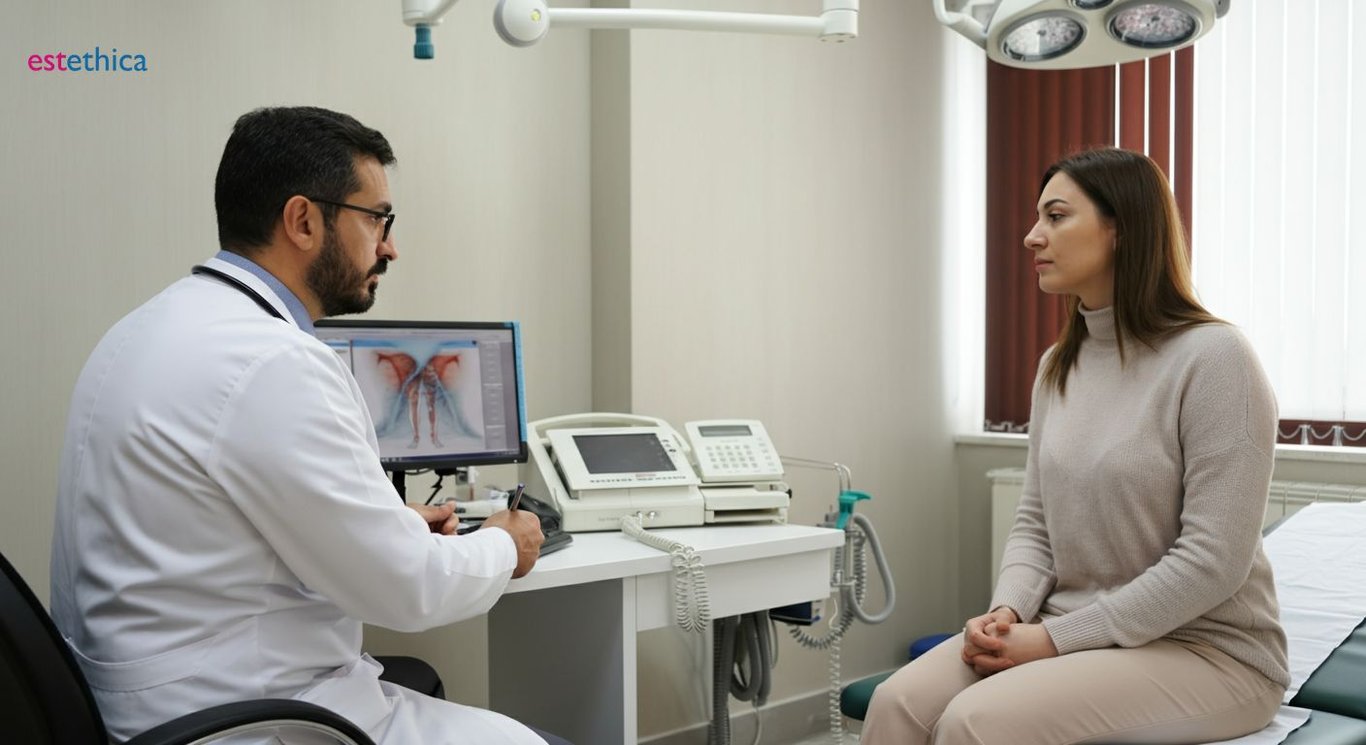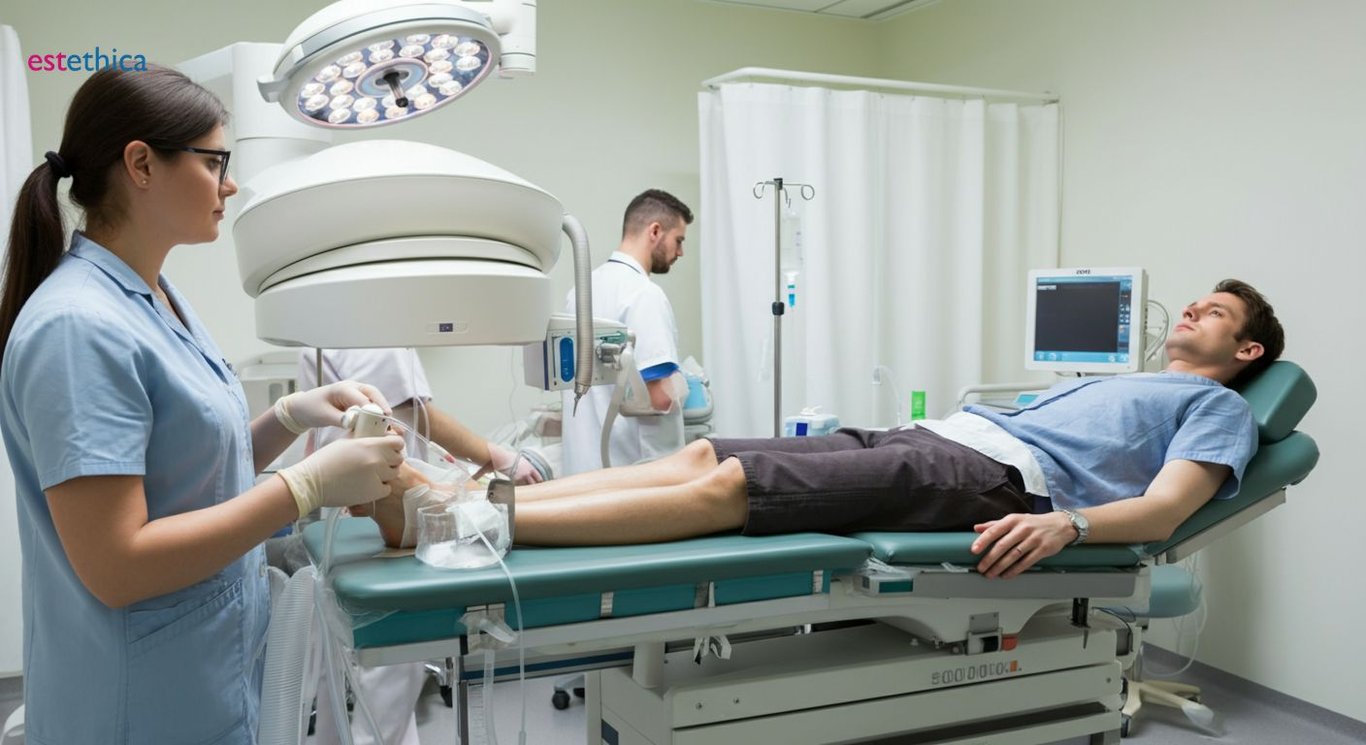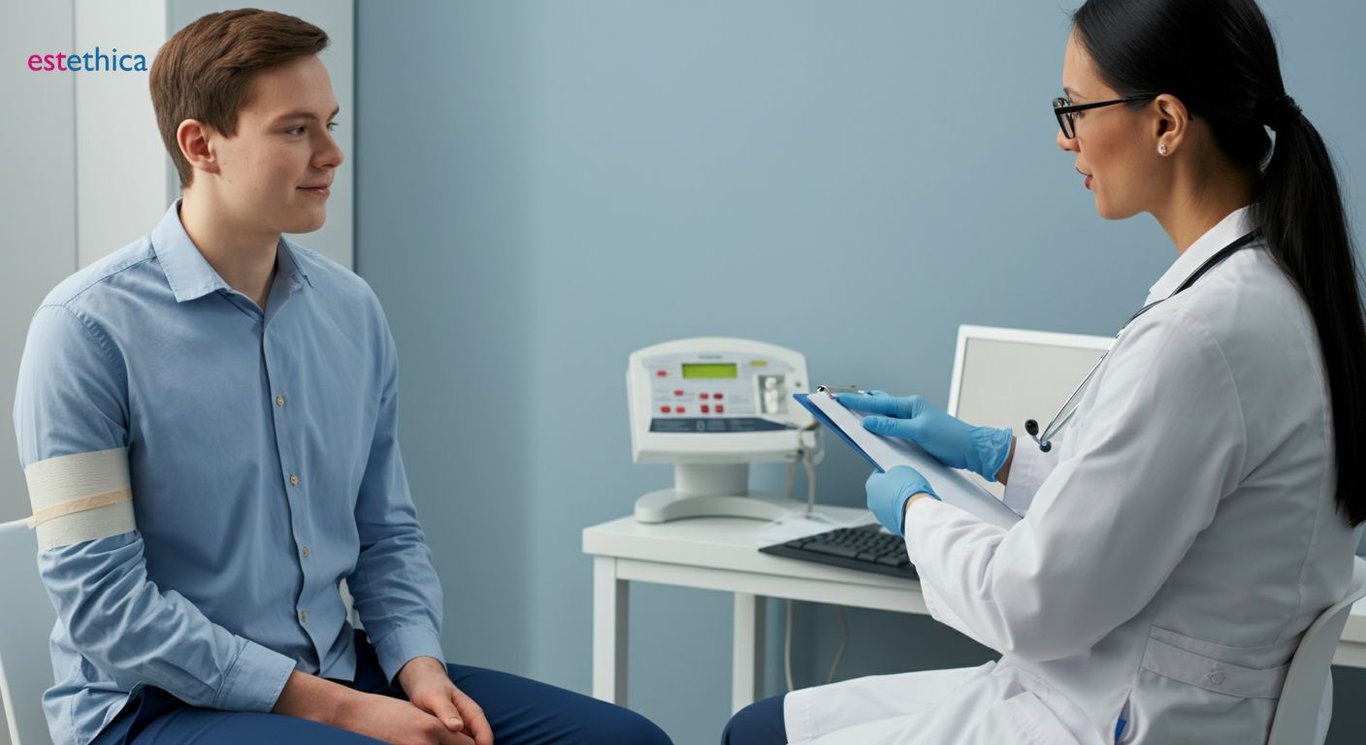Deep Vein Thrombosis: estethica's Insight
Discover estethica’s expertise on DVT treatment and prevention for a healthier you.
Deep vein thrombosis (DVT) is a serious condition where a blood clot forms in a deep vein, usually in the leg. Recognizing, treating, and preventing DVT is crucial due to its potentially life-threatening implications. As a leader in healthcare, estethica integrates advanced medical technology and comprehensive health services to address DVT with excellence and care.
Understanding DVT: Symptoms and Risk Factors
Recognizing the Symptoms of Deep Vein Thrombosis
Deep vein thrombosis (DVT) often manifests through distinct symptoms, primarily affecting the legs. Swelling is a common indicator, often accompanied by pain that intensifies when standing or walking. Additionally, the affected area may feel warm to the touch, and the skin might appear red or discolored. These symptoms can vary in intensity, making early detection crucial for effective management.
Common Symptoms of DVT
- Swelling in one leg, often around the calf area
- Pain or tenderness that may start in the calf
- Warmth in the affected area
Understanding these symptoms can aid in early diagnosis and treatment, potentially preventing complications such as pulmonary embolism.
Identifying Risk Factors for DVT
Several factors can increase the risk of developing DVT. Prolonged immobility, such as during long flights or bed rest, is a significant risk factor. Surgeries, especially those involving the legs or hips, can also elevate the risk. Genetic conditions, such as factor V Leiden, and lifestyle factors like smoking or obesity further contribute to the likelihood of DVT.
Key Risk Factors for DVT
- Prolonged periods of immobility
- Recent surgery or injury
- Genetic predispositions
Recognizing these risk factors is essential for prevention and early intervention, helping to reduce the incidence of DVT and its potential complications.

Innovative DVT Treatments at estethica
Advanced Medical Interventions for DVT
At estethica, we prioritize cutting-edge medical interventions to effectively manage deep vein thrombosis (DVT). Our approach includes the use of anticoagulant medications, which help prevent new clots from forming and existing ones from growing. For patients with severe cases, thrombolytic therapy is employed to dissolve clots quickly, reducing the risk of complications. Additionally, we utilize compression stockings to improve blood flow and alleviate symptoms.
Key Features of Our Medical Treatments
- Anticoagulant therapy tailored to patient needs
- Thrombolytic therapy for rapid clot resolution
- Compression therapy to enhance circulation
These treatments are designed to address the unique needs of each patient, ensuring optimal outcomes and minimizing the risk of recurrence.
Surgical Options for Complex DVT Cases
For complex DVT cases, estethica offers advanced surgical options. One such procedure is catheter-directed thrombolysis, where a catheter is used to deliver medication directly to the clot. In more severe instances, surgical thrombectomy may be necessary to physically remove the clot. Our team of specialists is skilled in these procedures, ensuring patient safety and effective recovery.
Surgical Treatment Process
- Initial assessment and imaging to determine clot location
- Selection of appropriate surgical intervention
- Post-operative care and monitoring for recovery
These surgical interventions are crucial for patients who do not respond to medical treatments, providing a comprehensive approach to DVT management.

Preventing DVT: Tips from estethica Experts
Effective Lifestyle Changes for DVT Prevention
Preventing deep vein thrombosis (DVT) involves adopting specific lifestyle changes. Regular physical activity, such as walking or cycling, enhances circulation and reduces the risk of blood clots. Incorporating these activities into daily routines can significantly lower DVT risk. Additionally, maintaining a balanced diet rich in fruits, vegetables, and whole grains supports vascular health. For instance, foods high in omega-3 fatty acids, like salmon and walnuts, can improve blood flow and reduce clotting risks.
Lifestyle Adjustments to Prevent DVT
- Engage in regular exercise to boost circulation
- Adopt a heart-healthy diet to support vascular health
- Stay hydrated to maintain optimal blood viscosity
These lifestyle adjustments not only help in preventing DVT but also promote overall well-being, making them essential components of a healthy lifestyle.
Medical Interventions and Monitoring
For individuals at higher risk of DVT, medical interventions may be necessary. estethica recommends regular check-ups to monitor blood health and clotting factors. In some cases, doctors may prescribe anticoagulant medications to prevent clot formation. These medications, when used under medical supervision, can be highly effective in reducing DVT risk. Additionally, wearing compression stockings during long periods of immobility, such as flights, can aid in maintaining proper blood flow.
Steps for Medical Prevention of DVT
- Consult with healthcare providers for risk assessment
- Follow prescribed anticoagulant therapy if necessary
- Use compression stockings during prolonged immobility
These medical strategies, combined with lifestyle changes, form a comprehensive approach to preventing DVT, ensuring patients remain proactive in their health management.

Recovery and Care: estethica's Approach to DVT
Comprehensive Support for DVT Recovery
Recovering from deep vein thrombosis (DVT) requires a multifaceted approach, and estethica excels in providing comprehensive care. Our recovery plan includes personalized physical therapy sessions designed to enhance mobility and prevent further complications. These sessions are tailored to each patient's needs, ensuring effective rehabilitation.
Key Components of estethica's Recovery Plan
- Customized physical therapy to improve mobility and strength
- Dietary guidance to support vascular health and recovery
- Regular check-ups for continuous monitoring and adjustment of treatment
These elements work synergistically to promote a safe and efficient recovery, minimizing the risk of recurrence.
Structured Recovery Process
estethica's structured recovery process ensures that patients receive the best possible care. Our approach begins with a thorough assessment to understand each patient's unique needs. Based on this, we develop a personalized recovery plan that includes regular evaluations to track progress and make necessary adjustments.
Steps in estethica's Recovery Process
- Initial assessment to tailor the recovery plan
- Implementation of personalized therapy and dietary support
- Ongoing evaluations to ensure optimal recovery outcomes
This methodical approach not only aids in a swift recovery but also empowers patients to take charge of their health, reducing the likelihood of future DVT occurrences.
Latest Trends in DVT Management
Innovations in DVT Treatment Techniques
estethica remains at the forefront of deep vein thrombosis (DVT) management by integrating the latest research and technological advancements. One notable trend is the use of advanced imaging techniques, such as ultrasound elastography, which provides detailed insights into clot composition and aids in tailoring treatment strategies. Additionally, the development of novel anticoagulants with fewer side effects has revolutionized DVT treatment, offering patients safer and more effective options.
Emerging DVT Treatment Trends
- Utilization of ultrasound elastography for precise clot analysis
- Introduction of novel anticoagulants with improved safety profiles
- Implementation of personalized medicine approaches for tailored treatment
These innovations not only enhance the effectiveness of DVT treatment but also improve patient experiences by minimizing adverse effects and optimizing recovery times.
Future Directions in DVT Management
Looking ahead, the integration of artificial intelligence (AI) in DVT management is poised to transform patient care. AI algorithms can analyze vast datasets to predict DVT risk factors and suggest personalized prevention strategies. Furthermore, wearable technology is emerging as a tool for continuous monitoring of patients at risk, providing real-time data to healthcare providers. These advancements promise to enhance early detection and intervention, ultimately reducing the incidence and severity of DVT.
Steps Towards Future DVT Management
- Development of AI-driven predictive models for DVT risk assessment
- Integration of wearable technology for continuous patient monitoring
- Collaboration between researchers and clinicians for innovative solutions
By embracing these future directions, estethica aims to lead the way in DVT management, ensuring that patients receive the most advanced and effective care available.
Innovative DVT Treatments with Advanced Medical Interventions
Proactive DVT Prevention with Expert Lifestyle Guidance
Frequently Asked Questions
What are the common symptoms of deep vein thrombosis?
How can I prevent deep vein thrombosis?
What are the innovative treatments for DVT at estethica?
What is the recovery process like for DVT patients at estethica?
What are the latest trends in DVT management?
Discover the Path to 'Healthy Beauty' with estethica! Call Now for Your Free Consultation and Experience World-Class Care.
📞 Speak with Our Experts Today!